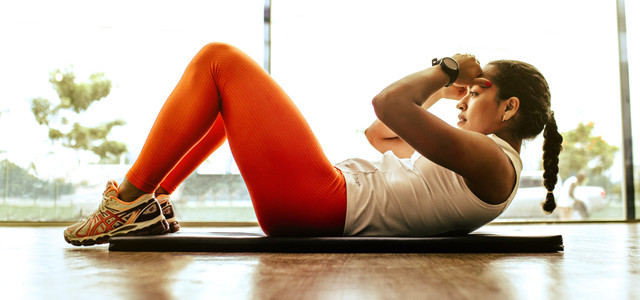
No space in the calendar for the sports program? We won’t accept this excuse! Workout stacking, i.e. exercise in chunks, could be the solution. Sports and health expert Prof. Ingo Froböse and fitness economist Sven Seidenstücker explain what is behind it and who will be happy (and fit) as a result.
The will to sport is there. Actually. If it weren’t for everyday life, unexpected things, stress. And then the visit to the gym was canceled because time was short. Or the sofa is more inviting than the weight bench after a long day. With so-called workout stacking, we shouldn’t be able to exercise because of a lack of time or motivation. This fitness trend is intended to make it particularly easy to incorporate exercise into your everyday life. You don’t even need a gym for this.
Two fitness experts reveal their tips here:
Workout stacking: sports units of 10 minutes
“You build a small exercise stack from different building blocks – individual exercises,” says Sven Seidenstücker, describing the new trend. He is a fitness and personal trainer and speaker at the German University for Prevention and Health Management. The duration for a so-called stack (German: stack) can be 10 minutes.
According to Seidenstücker, this can be a mini strength circuit that consists of squats, push-ups and some pulling movements against a resistance band.
“Cardiovascular health in particular is improved by short training sessions,” explains Ingo Froböse. He is a professor for prevention and rehabilitation in sport at the German Sport University in Cologne and heads an institute for exercise therapy.
If you want to get your cardiovascular system going, combine burpees, jumping rope and running in place, pulling your knees as high as possible. And if your head can’t calm down after a strenuous day, a little yoga flow combined with breathing exercises can do you good.
But weight management also benefits from the training, according to Ingo Froböse: “The short units increase calorie consumption and promote fat loss – if this is combined with a balanced diet.”
If you want to make it really easy for yourself, simply look for a video with the appropriate duration on the Internet.
Ingo Froböse has concrete tips ready:
Alternatively:
- High Intensity Interval Training with Prof. Froböse and Vanessa Blumenthal: 9-minute workout
- HIT Training | High Intensity Training | Prof. Ingo Froböse
“10 minutes is better than no exercise at all”
There are no rigid guidelines when it comes to workout stacking – and there shouldn’t be any. “Depending on your daily form, time budget or mood, you can create a suitable variant of workout stacking,” says Seidenstücker.
This way you can place several stacks one after the other and really work off some energy. Or you can spread them out over the course of the day – a bit of exercise in the morning, one after work. And if time is very short, it sticks to a single stack. True to the motto: 10 minutes of exercise is better than no exercise at all.
What are the benefits of short workouts?
The question remains: Do the little training bites actually do anything? Sven Seidenstücker is convinced of this. Just two short, intensive strength training sessions per week could improve strength and muscle performance. In addition, if you rely on workout stacking, you may be able to incorporate more exercise into your everyday life – because your weaker self doesn’t interfere as often.
Ingo Froböse recommends exercise in bits and pieces to two groups in particular: “Small, bite-sized movements are a wonderful way to get back into a sports routine, especially for fitness beginners and people returning to fitness. Even people with busy schedules who want to exercise but don’t have the time can benefit from the snack fitness sessions: “The mini sessions are easier to accommodate and ‘cost’ less motivation and effort!”
Who should be careful?
Ingo Froböse advises that beginners and those returning to exercise should stay away from high-intensity interval training (HIIT), in which the body reaches its limits in a very short space of time. And: “Even those who have more ambitious training goals that require more intensive training, such as extensive weight loss or a (half) marathon, are ill-advised to do short sports sessions; the desired results would take a long time to arrive!”
Conclusion: Short workouts are a good training method to bridge dry periods of time or as a break from a long day in the office. “Little exercise is better than no exercise,” is Ingo Froböse’s conclusion.
Read more on Techzle\.com:
- 10,000 steps daily? Ingo Froböse recommends an alternative rule
- Exercise in the morning or better in the evening? Fitness trainer gives tips
- Workout in bed: This is how you start the day fit